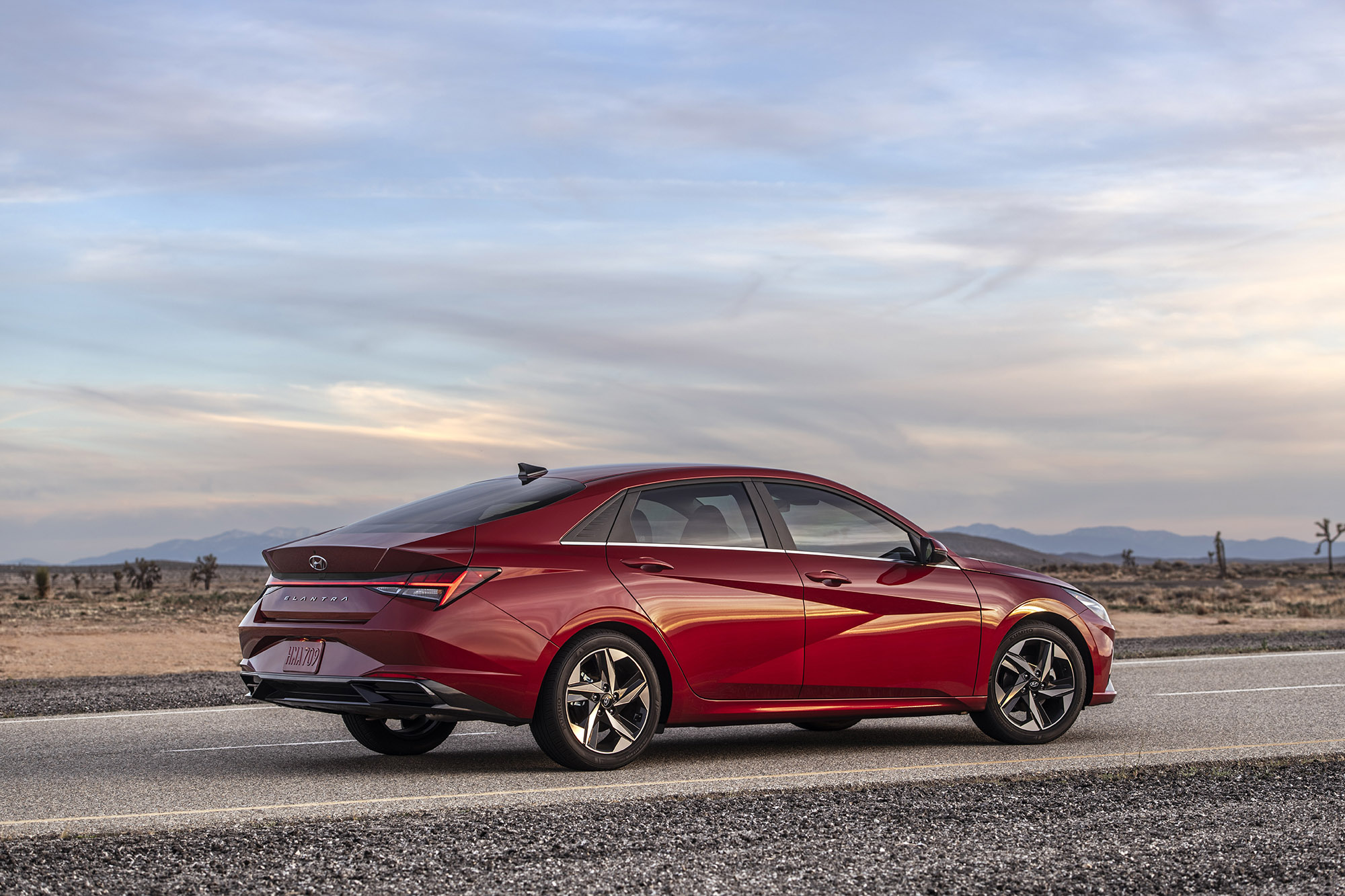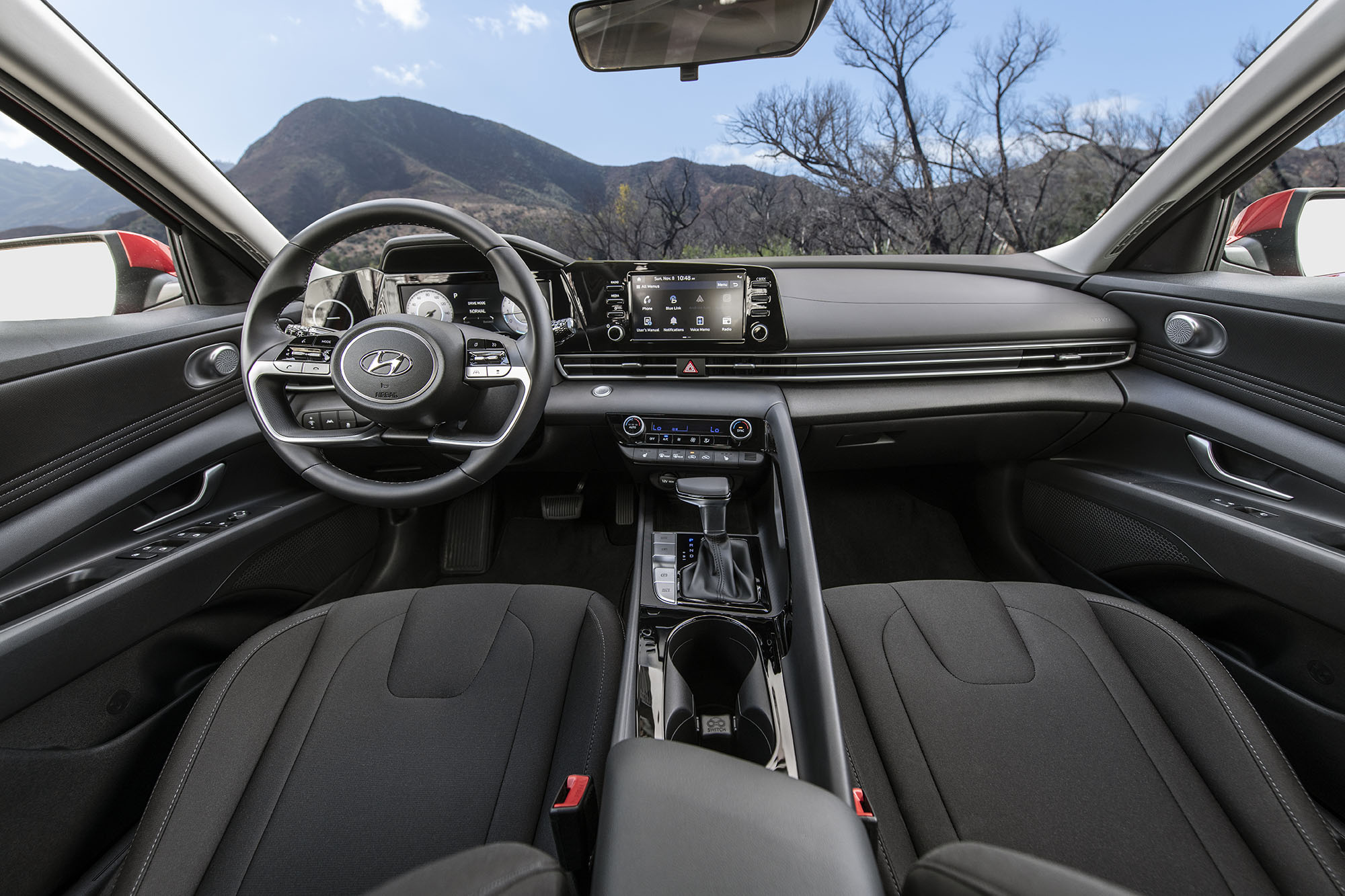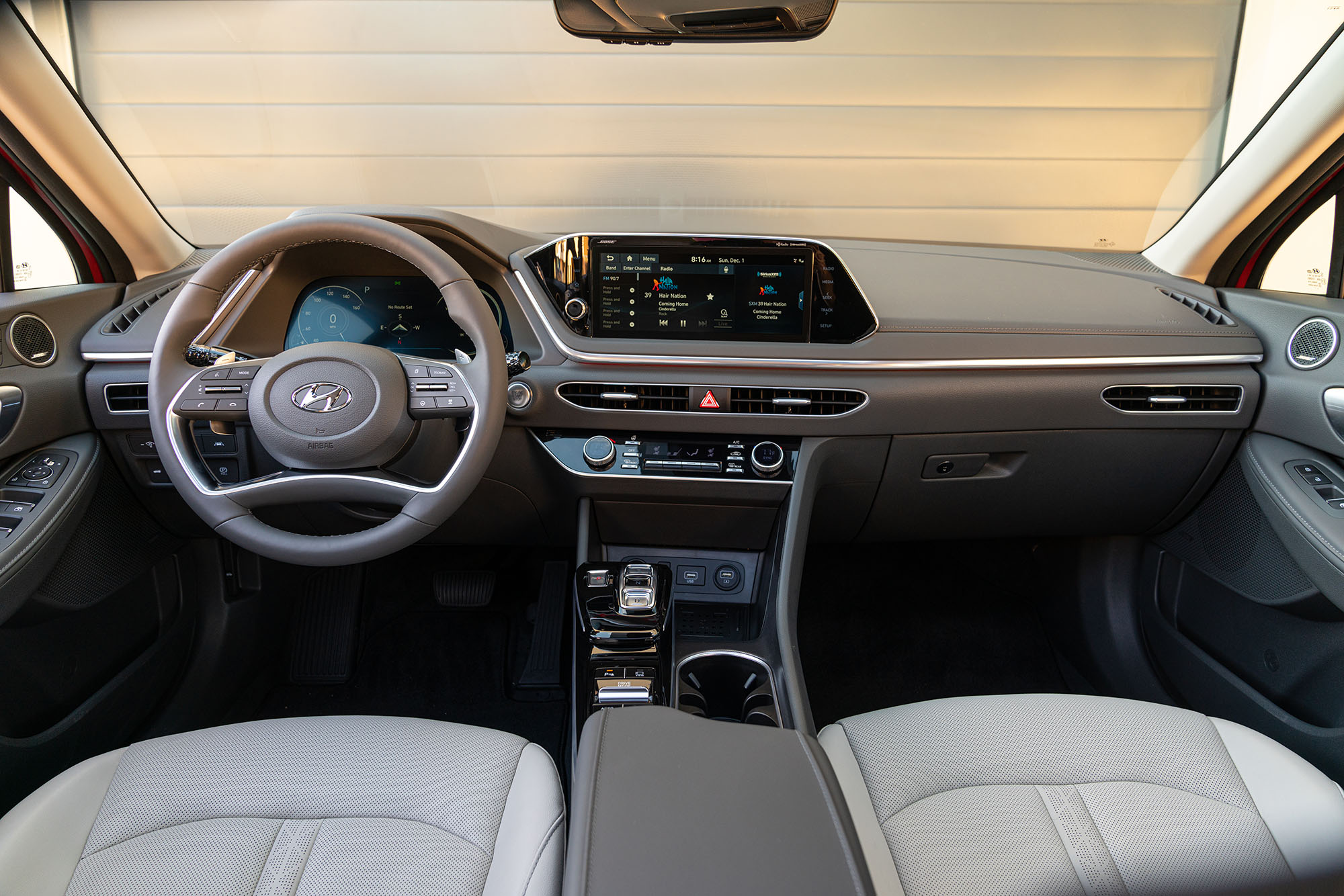Compared: 2023 Hyundai Elantra vs. 2023 Hyundai Sonata
In this battle of four-door sedans, it's Hyundai vs. Hyundai squaring price against practicality.
 Hyundai | Elantra (top)
Hyundai | Elantra (top)
Hyundai's compact Elantra and midsize Sonata are two strong sedan options. Perhaps the latter's added roominess is worth the roughly $4,000-higher base price.
It's also possible to land an Elantra that's more expensive than a base-model Sonata. So this choice really comes down not just to dimensions and price but also to the amenities you prefer.
 Hyundai | Elantra
Hyundai | Elantra
The Elantra Is Less Expensive Than the Sonata
There are three versions of the Hyundai Elantra: the "regular" gas-powered model, the high-performance Elantra N, and the hybrid. The regular Elantra is available in four trim levels, with the SE being the entry point. Starting at just above $22,000, it's a front-wheel-drive sedan powered by a four-cylinder engine making 147 horsepower and linked to a continuously variable automatic transmission (CVT).
The SEL and Limited trim levels use the same engine. The Elantra N Line features a 201-hp turbocharged four-cylinder, along with front-wheel drive and a seven-speed dual-clutch automatic transmission for $29,000.
The top-of-the-line Elantra N starts at $34,000, and is powered by a 276-hp turbocharged four-cylinder that can be mated to either a standard six-speed manual gearbox or an eight-speed dual-clutch automatic.
The gas-powered Hyundai Sonata, meanwhile, comes in five trim levels powered by a choice of three four-cylinder engines. The base model is the SE. Priced at $26,000, it makes 191 horsepower and features front-wheel drive and an eight-speed automatic transmission.
The Sonata SEL uses the same powertrain, but the SEL Plus and Limited use a 180-hp turbocharged engine and the same eight-speed automatic. The Sonata N Line steps it up with a 290-hp turbocharged engine, front-wheel drive, and an eight-speed dual-clutch automatic. Pricing for the N Line starts at $36,000.
 Hyundai | Sonata
Hyundai | Sonata
The Sonata Boasts More Bells, Whistles, Space, and Versatility
In terms of safety features, both models are well equipped right out of the gate, coming with automatic emergency braking, lane-keep assist, and blind-spot monitoring.
The Sonata SE has what the Elantra SE has for standard equipment and more. One particular feature exclusive to the Sonata SE is adaptive cruise control. That said, the Elantra SEL with the Convenience Package includes adaptive cruise while still undercutting the Sonata SE.
 Hyundai | Elantra
Hyundai | Elantra
Although the Sonata is 8.8 inches longer than the Elantra, that doesn't translate into more cabin space in all dimensions. The Elantra has 3.2 inches more rear-seat legroom, for example. The Sonata has 1.1 inches more rear-seat headroom, 3.8 inches more front-seat legroom, and more hip and shoulder room across both seats.
The Sonata also has the edge in terms of passenger volume by 5.0 cubic-feet and more cargo room in the trunk by 1.8 cu-ft. To cap things off, only the Sonata has a standard 60/40-split fold-down rear seat, making it more versatile than the Elantra for carting larger items. A split-folding rear seat is available on costlier Elantra trims, though.
 Hyundai | Sonata
Hyundai | Sonata
The Hyundai Elantra Gets Better Fuel Economy Than the Sonata
The Elantra SE returns an EPA-estimated 33/42/37 mpg city/highway/combined. The Elantra SEL and Limited deliver 30/40/34 mpg, while the N Line, with its racier engine, comes in at 28/36/31 mpg. The topline Elantra N returns 22/31/25 mpg with the manual transmission and 20/30/23 mpg with the dual-clutch automatic.
The Sonata SE gets 28/38/32 mpg. The Sonata SEL Plus and Limited deliver 27/37/31 mpg, and the Sonata N Line manages 23/33/27 mpg.
All vehicle pricing includes MSRP plus destination charges (set at the time of publication), and will be rounded to the nearest thousand.
Written by humans.
Edited by humans.
 Mark Hacking
Mark HackingMark Hacking is an award-winning writer with more than 20 years experience covering the automotive scene for some of the world's most popular publications. Mark holds an FIA International Race license and has his sights set on competing in the Rolex 24 at Daytona in the future. He was the first automotive journalist to race in the Ferrari Challenge series (in 2013) and the Jaguar I-PACE eTrophy series (in 2019).
Related articles
View more related articles